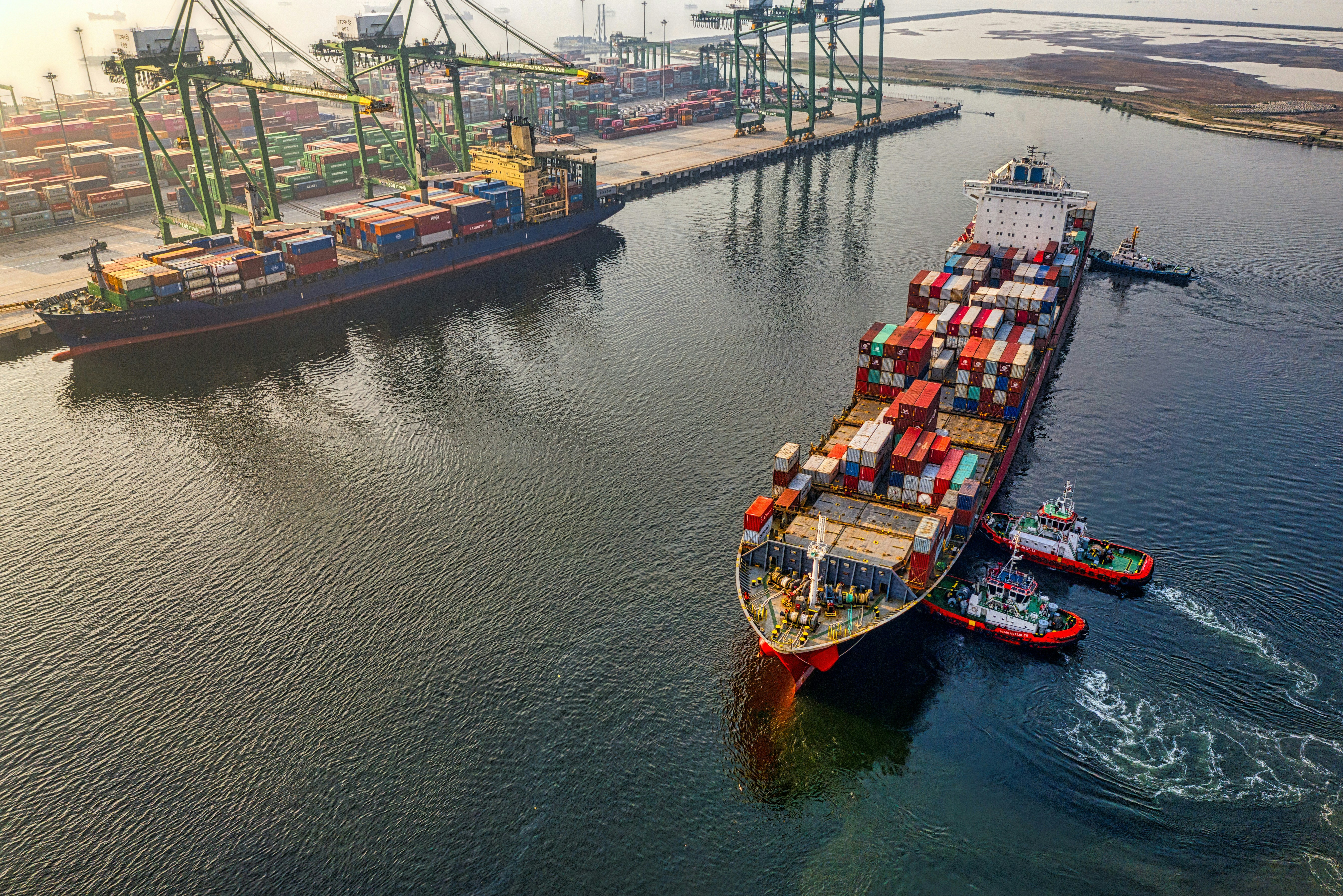Wharfage is one of the most common yet misunderstood charges in international shipping.
Whether you’re importing goods from the Far East or exporting goods across the border to the continent, wharfage fees can directly impact your bottom line. Understanding what wharfage is and how it works is essential for managing budgets and avoiding unexpected expenses.
This comprehensive guide covers what wharfage is, how it's calculated and how to manage these costs.
What is wharfage?
Wharfage is the charge that port authorities levy for the use of the port’s physical infrastructure, including the quays, berths and dock facilities when your cargo is stored, loaded and unloaded. The charge covers the cost of maintaining and operating these facilities.
While wharfage is charged by the port and not your shipping carrier, your carrier will often collect the fee on behalf of the port and pass it on to you.
Why pay wharfage?
Wharfage fees fund the ongoing operations and maintenance of ports, including the infrastructure, staff and security.
But wharfage fees also serve a secondary purpose: incentivising cargo movement. By charging for storage, ports encourage businesses to collect cargo quickly. It keeps cargo moving efficiently and prevents port congestion.
How do ports calculate wharfage?
There are several methods for calculating wharfage, depending on the port and cargo. Here are the most common:
- Per container. The most common calculation method for containerised cargo. Ports charge a fixed rate per twenty-foot equivalent unit (TEU) or per full container load (FCL). For example, a port might charge £25–£40 per TEU for wharfage.
- Per tonne. For breakbulk cargo, general cargo or non-containerised shipments, ports often calculate wharfage per metric tonne of cargo.
- Per square metre. Some ports charge based on the actual wharf space occupied by the cargo. This method is less common but may apply to oversized or project cargo that requires dedicated space.
- Minimum charges. Most ports impose minimum wharfage charges regardless of shipment size. Even a small, light shipment will incur a baseline fee.
Wharfage rates vary significantly by port, but they’re all published on the port’s official rate card.
Wharfage vs demurrage
It’s common to confuse wharfage with demurrage. While the two charges sound similar, they’re actually different.
While wharfage is charged for the use of the port itself, demurrage is charged when cargo remains at the port beyond the allowed time period. It’s a per-diem charge that accumulates daily and is usually more expensive than wharfage.
If your container remains at Southampton Port for 10 days beyond the free period, you’ll incur demurrage charges for each additional day.
Factors that affect wharfage fees
Several variables impact the wharfage fees you pay for a given shipment:
- Port location: Different UK ports charge different rates. Premium ports like Felixstowe and Southampton typically charge higher wharfage than smaller regional ports.
- Cargo type: General containerised cargo attracts standard rates, while refrigerated containers (reefers), hazardous materials, oversized or project cargo often incur higher rates.
- Container size: Twenty-foot containers (TEUs) typically incur lower wharfage than forty-foot containers (FEUs), as they occupy less space.
- Seasonal variations: Peak shipping seasons (typically September to November) can result in higher wharfage charges or surcharges to manage terminal congestion.
- Free time allowances: Most ports include several free days for cargo storage before wharfage charges apply or before demurrage begins accruing.
How to manage wharfage fees
While wharfage fees are a fixed cost of doing business through ports, you can employ several strategies to minimise your exposure.
Collect cargo promptly
Collecting your cargo promptly minimises additional storage or demurrage costs. Coordinate with your freight forwarder or transport provider to ensure they pick up containers during the free time window. This prevents the accumulation of demurrage charges, which usually exceed wharfage.
Consolidate shipments
When possible, consolidate multiple smaller shipments into full container loads (FCLs). Doing so reduces the per-unit wharfage cost compared to less-than-container-load (LCL) shipments, spreading wharfage fees across more goods.
Choose the right port
Consider routing your cargo through ports with lower wharfage tariffs or where your cargo can be handled more efficiently. Port selection should factor in both wharfage rates and your logistics network. A slightly higher wharfage at a closer port might be preferable to lower rates at a distant terminal.
Use a freight forwarder
Experienced freight forwarders often have relationships with port authorities and shipping lines that can yield better rates or terms. Discuss wharfage handling and any potential discounts with your freight forwarding partner.
Plan shipments in advance
Avoid peak shipping seasons when wharfage surcharges are most likely. By spreading shipments beyond peak periods (September to November), you may avoid premium wharfage rates.
Understand your Incoterms
The Incoterm used in your sales contract determines who bears wharfage costs. Under CIF or CFR terms, the exporter typically pays wharfage. Under DDP or DAP terms, the importer bears these costs.
Request rate cards from ports
Major UK ports publish their rate cards annually. Obtain these documents for ports you use regularly and factor wharfage into your freight budgets. This prevents surprise charges and helps with cost forecasting.
Shipping internationally with Pro Carrier
Wharfage is a fundamental cost in international shipping that every importer and exporter should understand and manage. While you can’t eliminate the charges completely, you can significantly reduce your exposure to these costs.
The difference between shippers who manage wharfage well and those who don't often comes down to planning and coordination. That’s where working with an expert international logistics partner like Pro Carrier comes in.
Our expertise means we can help you minimise the costs of shipping internationally, whether that’s by choosing a specific port, working ahead of schedule to avoid delays or consolidating shipments to reduce per-unit wharfage costs.
Plus Horizon, our all-in-one supply chain solution, lets you track your shipment in real time to coordinate pickup.
For more information on how you can ship cost-effectively from the Far East to the UK, read our case studies or speak to one of our experts today.
